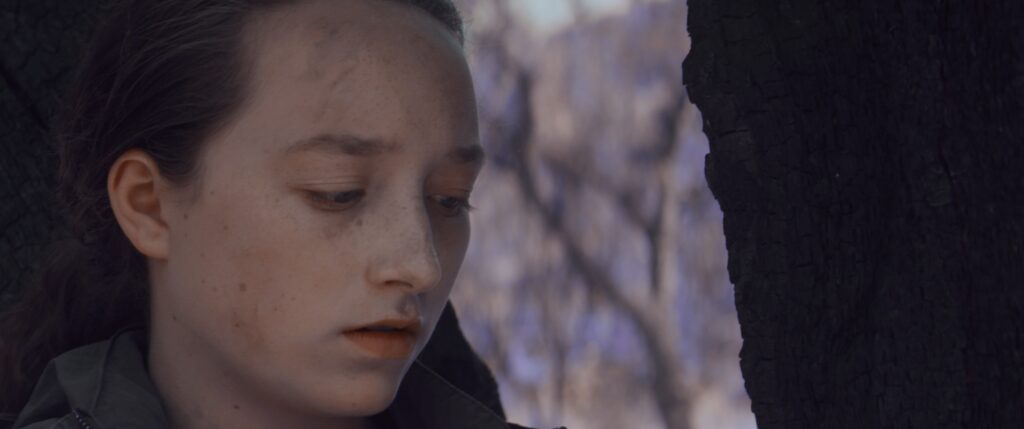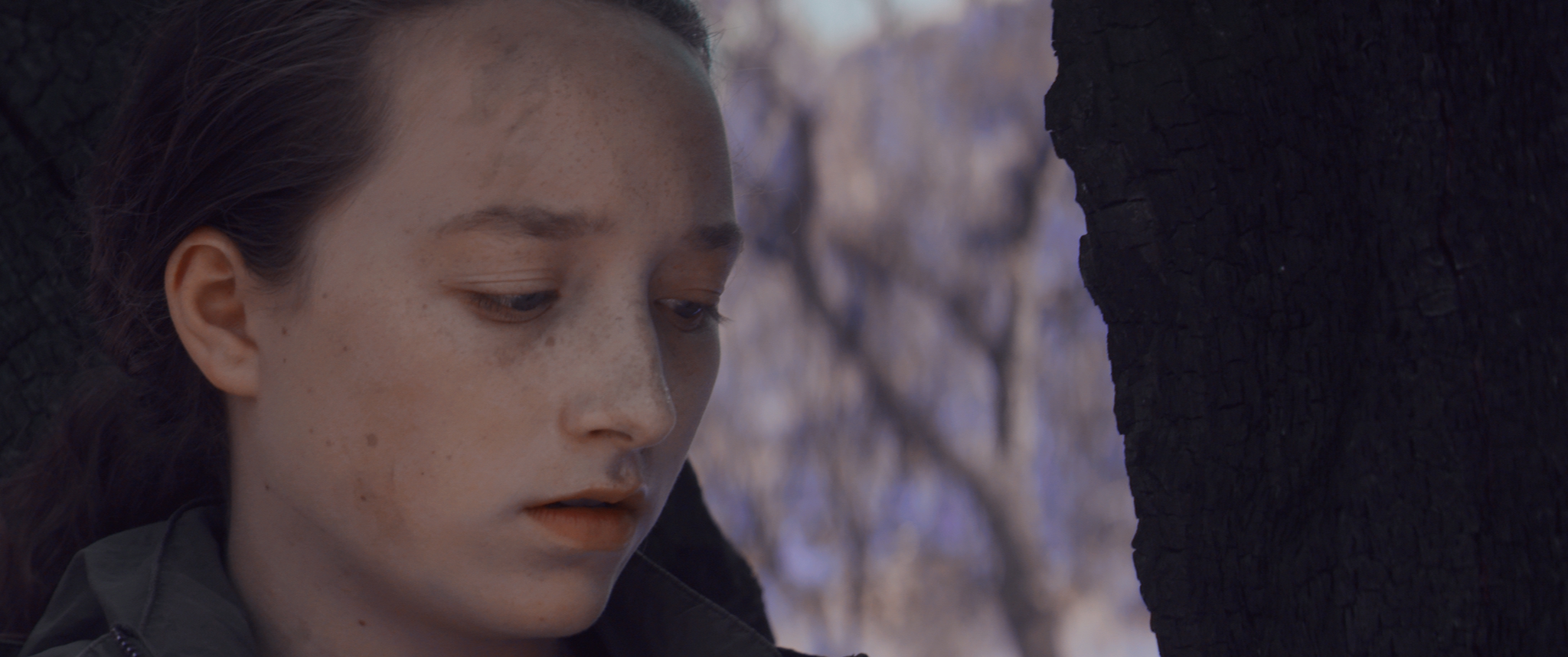Talent certainly runs in the gene pool as proven by Julie Pacino (daughter of Oscar winning actor Al Pacino). She is the award winning director of a poignant short film entitled NOWHERE TO GO. This award winning film, beautifully written by Sheri Sussman, looks at the inner darkness of contemplating suicide when feeling trapped within yourself. It brings to light simplistically, yet powerfully, an understanding of living with a fear that everyday will be the same struggle.
The charred landscape in the opening carries a metaphorical meaning. A caterpillar reveals the slowness of time in this desolate place – a place that feels abandoned by life. A seventeen year old girl (Alexis Rosinsky) walks alone – her fingertips brushing up against tall weeds. Without meaning to, she crushes the caterpillar beneath her boot.
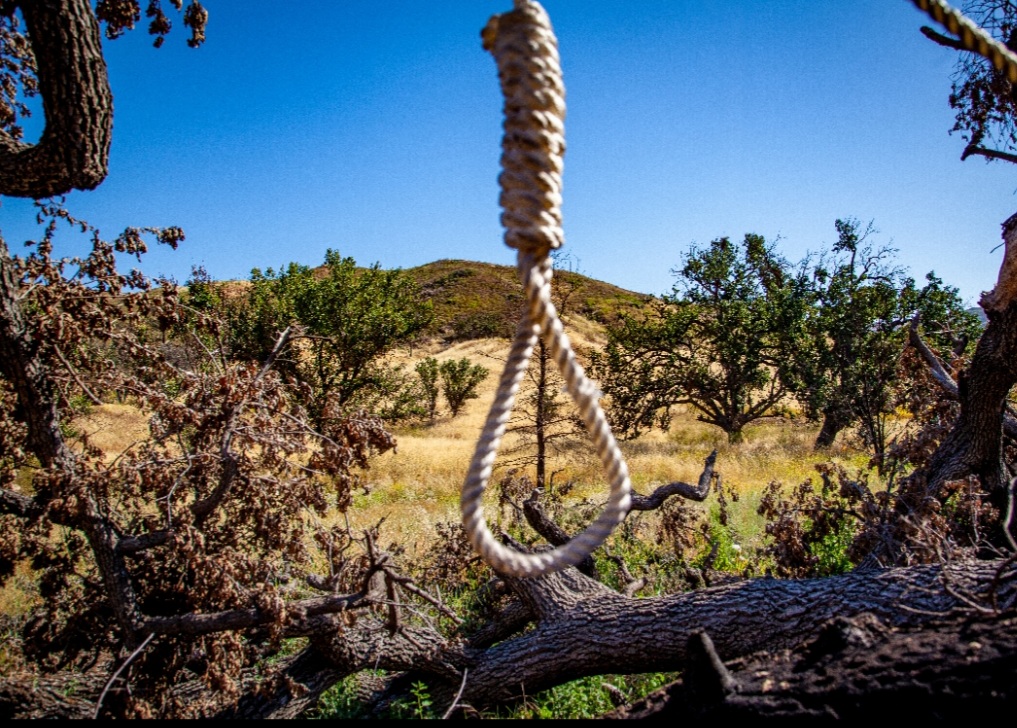
At this moment, she notices a young man in his twenties (Kyle Kaminsky) testing the fit of a noose around his neck. She runs over to the tree, pulling him down, in an attempt to prevent him from killing himself. That gesture of wanting to save a life is even more stirring when we learn, soon after, that the girl has a pocket full of pills to carry out the same objective – suicide.
The young man is not happy by the save and goes after the young girl after she takes off. “Slow down please” – his voice echoing behind her. The echoes imply that something is “off” in this world.
As the film progresses, the two start to peel back layers of themselves exposing more of who they are. Their progression forward is represented brilliantly by the changing color of the landscape. The vivid and vibrant colors now reflect an altered state – from being numb to being fully aware.
The young man asks “is there anything that you ever even wanted to do?” She replies “I just wanted to be. Just be.” He also understands the fact that “you can’t think yourself into a feeling” – no matter how much you try.
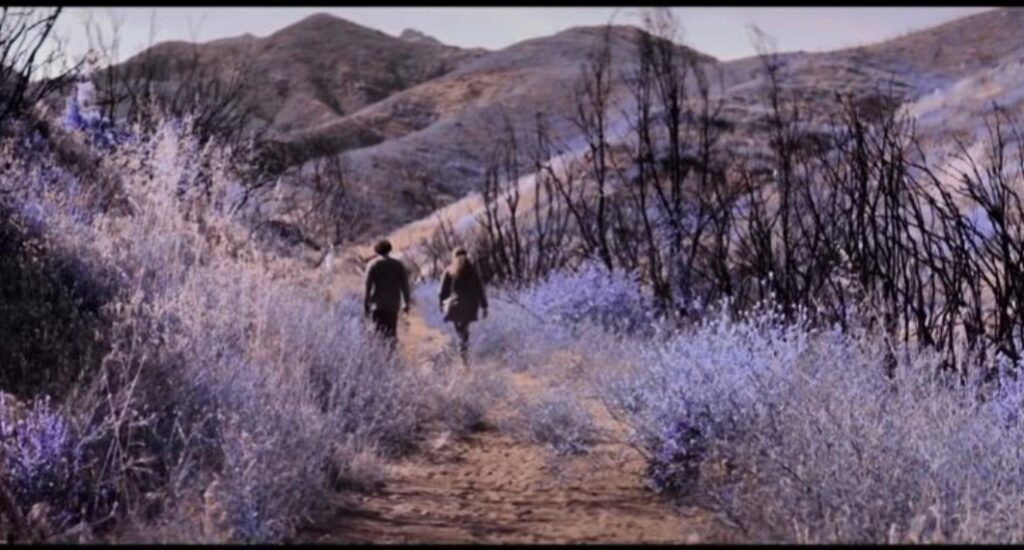
The point in the film where she asks “where are we?” and he replies “no where” is raw. They share a silent look between them that says they are no longer strangers. These two disillusioned young people connected on a level they’ve never experienced before – through a random encounter.
Looking at the bottle of pills he asks “mind if I join you?” “Yeah, I kinda do” she replies. They both decide to share a journey to the unknown – to a destination they think will get them out of their pain. Rather than be no where they are in search of where their somewhere is. The visual of their world turned upside down during this scene is captivating.
Rosinsky and Kaminsky richly bring their characters to life. Their layered subtext, especially in the moments of silence, is filled with an inner emotion that is palpable on screen. There is an unspoken intimacy shared between the two.
Every collaborative aspect of this film makes it an artistic gem. Cinematography (Aron Meinhardt), Editor (Ted Maniatakos), DI Colorist (Deigo Alex Borghello), Music (Dave Eggar, Dave Levitan, Chuck Palmer) and Sound (Erick Jolley).
Pacino and Sussman look into “the state of mind” of these characters – and perhaps all of us. These nameless characters seem to represent everyone of us who is living in our own purgatory. Repetitive thoughts can become debilitating when feeling stuck in a place we don’t want to be – especially when we can’t see the light to lead us out. The sense of “this is it” can feel like a death sentence for those of us who live it.
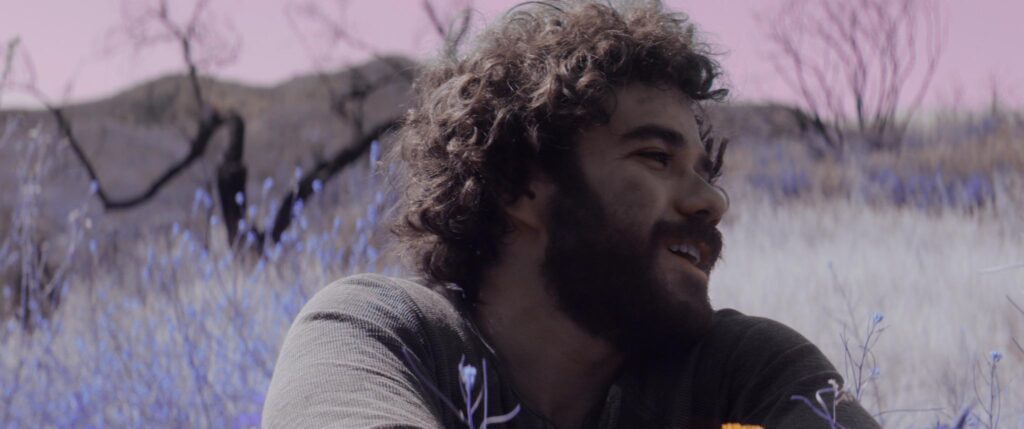
There is also a beautiful ambiguity surrounding the story that leaves room for personal interpretation. At times, he almost feels like her subconscious. Is she imagining him in her mind’s eye or is he real? Sussman makes her audience think with her screenplay and Pacino’s direction makes it a work of art.
The ending is as fascinating as the beginning. The role of the caterpillar in the film bears its spiritual meaning of transformation and emerging anew. When the film hits replay there is an evolution confirmed by the beauty of a simple smile.
This smile gives us all hope that our today – is not our tomorrow.

